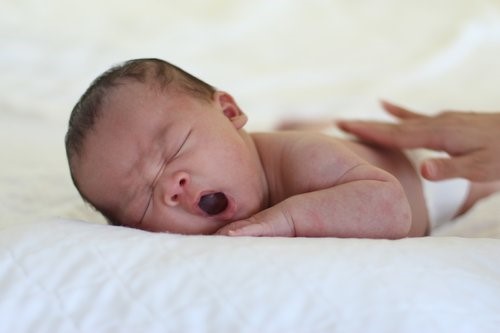Cerebral palsy, also known as CP, is the loss or impairment of motor function caused by brain damage. Motor function is used to describe activity or movement in relation to the use of muscle and nerves in the body. In other words, CP is the loss or impairment of muscle activity and movement.
Cerebral palsy affects body movement, muscle control, muscle coordination, muscle tone, reflexes, posture, and balance. It also has an effect on fine motor skills, gross motor skills, and oral motor functioning. These terms may be confusing to some, so we will be discussing these in more detail later on.
Physical impairments that can be associated with CP can depend on many different factors such as the type of movement dysfunction, the location, number of limbs involved, and the extent of the impairment. Each individual is different and will show different factors and severity depending on their brain injury.

Cerebral palsy is a non-life threatening condition that does not progress (no further brain damage or degeneration). CP is also a permanent condition that is currently incurable. However, it is manageable through various treatment methods.
What Causes Cerebral Palsy?
Cerebral palsy is caused either by a brain injury or a brain malformation (deformity). A brain injury or deformity occurs before, during, or immediately after birth while the infant's brain is still developing. The brain damage during development causes impairment in motor function (balance, posture, reflexes, muscle coordination, muscle tone, and muscle control).
Cerebral palsy is a complex condition that varies among each individual. Because there are so many variations it can be hard to determine the type of brain damage that occurred. Therefore medical professionals take into account all of the following when determining the type of brain damage: medical history, lab tests, developmental findings, and MRI or CT scan results.
What Are Signs and Symptoms of Cerebral Palsy?
Early on, signs and symptoms may not be present. Parents or health care professionals may not start to see signs and symptoms until the first three to five years of life. The child's brain is still developing through the first five years of life.
Early signs of cerebral palsy include development delay, unusual posture, early development of hand preference, abnormal muscle tone, and persistent infant reflexes. Other signs and symptoms include:
- Improper muscle tone: muscles do not move or coordinate together
- Abnormal movement coordination and control
- Abnormal reflexes: either display excessive reflex response or underdeveloped/lacking posture and protective reflexes
- Abnormal posture: asymmetrical posture or abnormal postural response when put in a certain position
- Balance: inability to support self in sitting, standing, or walking
- Poor gross motor function: delayed gross motor function in physical skills (rolling, sitting up, crawling, standing, and/or walking)
- Poor fine motor function: delayed fine motor function in executing precise movements (grasping small objects, holding objects, using crayons, and/or turning pages)
- Poor oral motor function: difficulty using lips, tongue, and jaw & difficulty with speaking, swallowing, feeding/chewing, and/or drooling

What Does Treatment Look Like for a Child with Cerebral Palsy?
The main focus of treatment for a child with cerebral palsy is to treat the primary condition, which is the physical impairment. Secondary conditions may arise, which are caused from the primary condition. These will also need to be addressed during treatment.
The primary treatment protocol for cerebral palsy is therapy and adaptive equipment; other treatments include drug therapy and surgical interventions. Each medical specialist will have their own set of goals tailored to the specific impairment they specialize in. The main overriding treatment goals for cerebral palsy include:
- Managing the primary condition
- Maximizing independence
- Controlling the pain
- Optimizing mobility
- Preventing and managing complications or associative conditions
- Maximizing learning potential
- Providing quality of life
For more information, contact organizations like United Cerebral Palsy, the Mayo Clinic, or the author of this blog.
About the Author
Alicia Martinez, PT, DPT is a pediatric physical therapist who prides herself in providing quality, individual care to children of all ages and of all abilities. Her knowledge and education allows for a creative and fun approach that enables her to work with children at any point in development. Through Milestones Therapeutics, Alicia is committed to educating and supporting children and their families in a safe and welcoming environment.
Most of the stories here on Live Quickie were submitted by readers. Do you have a story to tell? We'd love to hear it. Submit your story here.